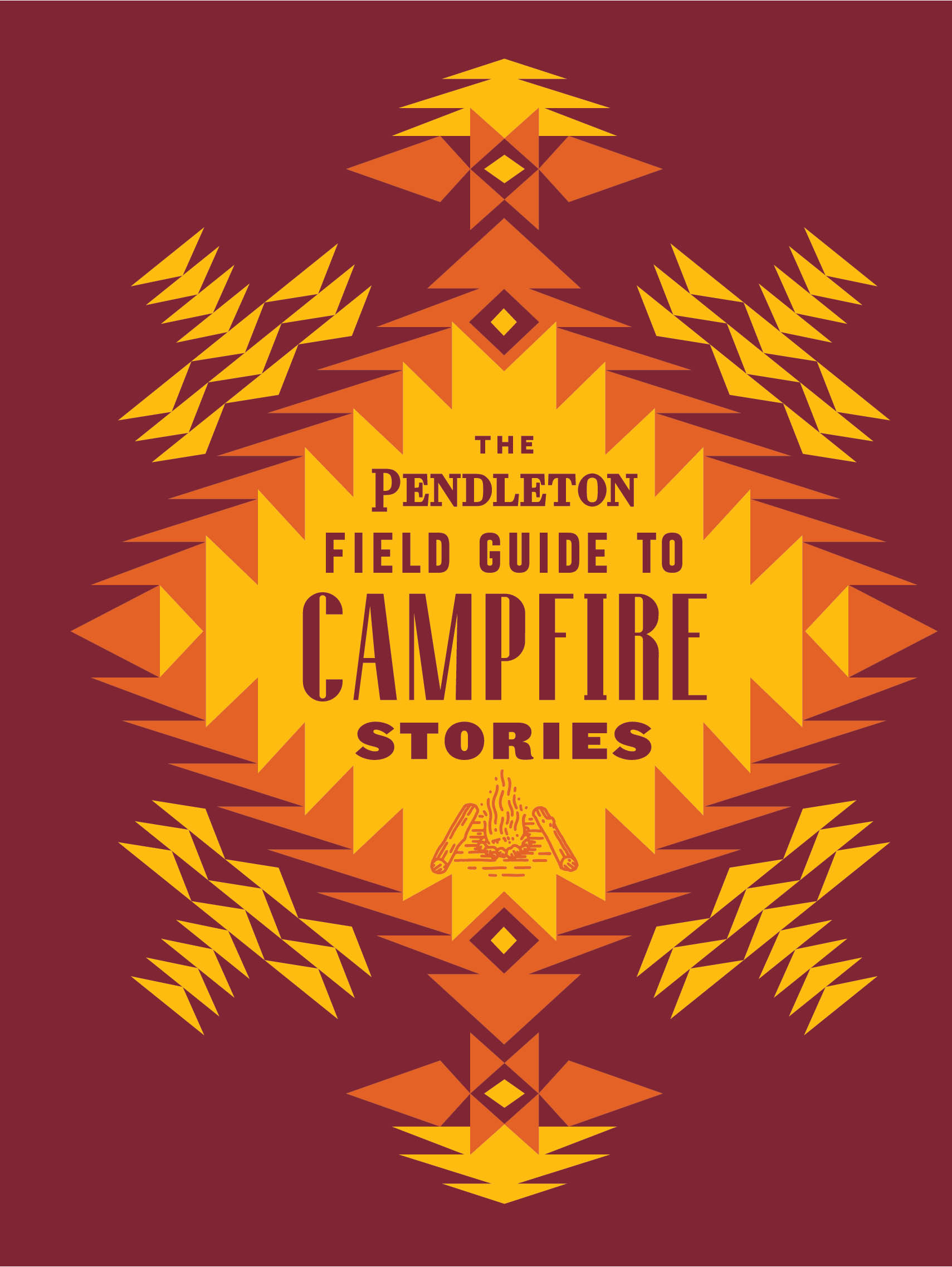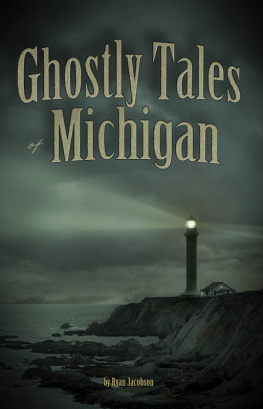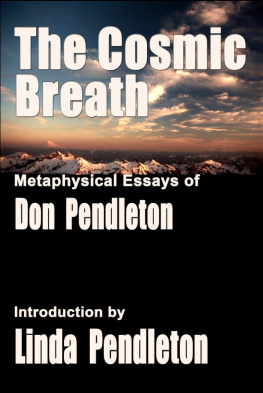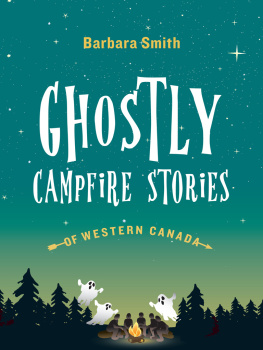

Copyright 2021 Pendleton Woolen Mills, Inc.
Photographs used under license from Shutterstock.com.
Illustrations copyright 2021 Pendleton Woolen Mills, Inc.
All rights reserved. No part of this book may be reproduced in any form without written permission from the publisher.
constitute a continuation of the copyright page.
Library of Congress Cataloging-in-Publication Data available.
ISBN 978-1-7972-0767-4 (epub, mobi)
ISBN 978-1-7972-0758-2 (hardcover)
Line illustrations by Derek Nobbs.
Design by Kayla Ferriera.
Introduction and editorial contributions by Mallory Farrugia.
Chronicle books and gifts are available at special quantity discounts to corporations, professional associations, literacy programs, and other organizations. For details and discount information, please contact our premiums department at or at 1-800-759-0190.
Chronicle Books LLC
680 Second Street
San Francisco, California 94107
www.chroniclebooks.com

INTRODUCTION

STORIES OF
THE WILD
BY MALLORY FARRUGIA
For those who love to camp, theres a familiar rhythm: You spend a long day in the wilderness, pitch your tents, and build a fire. Since humans first made fire four hundred thousand years ago, the campfire has been a place of nourishment: We nourish our bodies with warmth and food, and we nourish our minds with stories. These stories awaken our imagination, connect us with one another, and expand our notion of whats possible.
The stories in this book aim to do just that. In these pages, youll discover a wide range of talesfeats of endurance, journeys into the unknown, encounters with wild animals (or their more mythical counterparts), contemplations on the lessons of the natural worldthat endeavor to capture the incredible breadth of experience that the outdoors offers us. Taken together, they represent our fascination with wild places and the indelible impression these experiences leave on our lives. Spending time in the outdoors, surrounded by natures beauty and power, is a way to connect to our truer selves and to one another. We always come back from these magical experiences changedand with a story to share.
For some, venturing into the outdoors is a way to break down barrierspersonal, social, global. For Alex Honnold, the outdoors is a place to push personal boundaries, defying death on a ropeless climb. As the first American to summit Annapurna I and the first to lead an all-women ascent, Arlene Blum found space in the outdoors to break one of many glass ceilings.
The wild can also be a place to connect with those who have gone before us. Jamling Tenzing Norgay journeyed to Mount Everest to commune with the spirit of his late father, the Sherpa who famously made the first ascent of the worlds highest peak alongside Sir Edmund Hillary. For Bree Loewen, a mountain is a map of her memories: a wedding proposal, a rescue, a tragic death.
For some brave explorers, the ultimate adventure lies in the mythical polar regions: in the snow, ice, or expansive tundra in the extreme north and south of the earth. For Ernest Shackleton, the Antarctic continent was the final frontier of exploration, and he was determined to lead the first overland expedition across it. But the adventure he found proved to be of a very different nature: a quest for survival at sea, adrift on a polar ice cap.
For many of us, like the poet Han Shan, philosopher Henry David Thoreau, and environmentalist John Muir, the wilderness simply feels like homea home away from the complexity, drama, and never-ending demands of human civilization.
The wilderness is not always a place of quiet retreat, and our experiences there are not always triumphant. Here youll find storiesboth true and fictionalabout mishaps in the wild: a disastrous shortcut taken, a perilous fall, an encounter with an evil spirit. These spookyor downright terrifyingtales remind us that wild places have a power that cannot be tamed. The natural world deserves our admiration and respect (and sometimes a healthy dose of fear).
Whether youre venturing to the woods, mountains, sea, or tundraor simply snuggling up at home in front of the fireplacethese stories will beckon you into a world full of adventure, excitement, and awe. The tales in this book are meant to inspire you to gather around the fire with friends and family to tell your own stories of adventure in the outdoors.
As mountaineer Arlene Blum puts it, Fishermen tell fish stories, pilots tell flying stories, and climbers tell stories of their near escapes. With its many alluresthe lure of adventure, physical challenge, exploration, reflection, self-discoverythe wild offers an experience to everyone, and with it, a story to tell. Whats yours?
AT HOME IN
NATURE

6
From Cold Mountain Poems 2013
BY HAN SHAN,
TRANSLATED BY GARY SNYDER

Much like the cold mountain that he writes of, Chinese Buddhist poet Han Shan is a mythical mysterious figure, as very little is known about his life and work. He lived during the Tang Dynasty, in the late eighth or early ninth century, and was known as a recluse, inhabiting a remote mountain region and writing poems on natural materials. Han Shans poetry has long been popular in Japan; it gained attention in the West in the 1950s, when Beat poet Gary Snyder translated 24 of his poems and published them in the Evergreen Review.

Men ask the way to Cold Mountain
Cold Mountain: theres no through trail.
In summer, ice doesnt melt
The rising sun blurs in swirling fog.
How did I make it?
My hearts not the same as yours.
If your heart was like mine
Youd get it and be right here.
THE PLATEAU
From The Living Mountain 1977
BY NAN SHEPHERD

The Living Mountain, Nan Shepherds meditative memoir of walking in the Scottish mountains, perfectly captures the energy and beauty of the alpine ecosystem. Shepherd, a mountaineer, naturalist, and writer, describes the lightness of body and elation of mind we experience when we hike mountainsthe fearlessness, the sense of abandon, the feeling of liberationas she transports us to the high plateau of the Cairngorm Mountains.

S ummer on the high plateau can be delectable as honey; it can also be a roaring scourge. To those who love the place, both are good, since both are part of its essential nature. And it is to know its essential nature that I am seeking here. To know, that is, with the knowledge that is a process of living. This is not done easily nor in an hour. It is a tale too slow for the impatience of our age, not of immediate enough import for its desperate problems. Yet it has its own rare value. It is, for one thing, a corrective of glib assessment: One never quite knows the mountain, nor oneself in relation to it. However often I walk on them, these hills hold astonishment for me. There is no getting accustomed to them.









 INTRODUCTION
INTRODUCTION 




